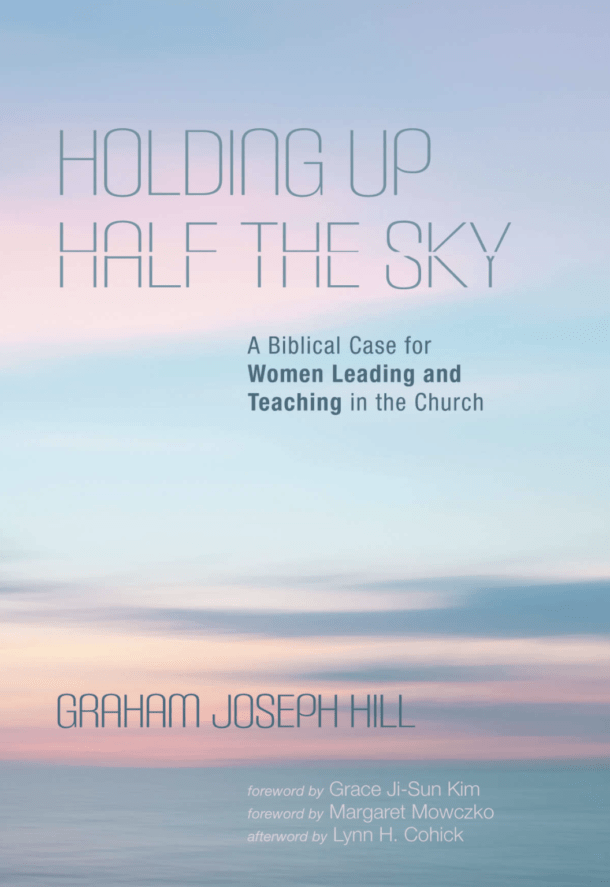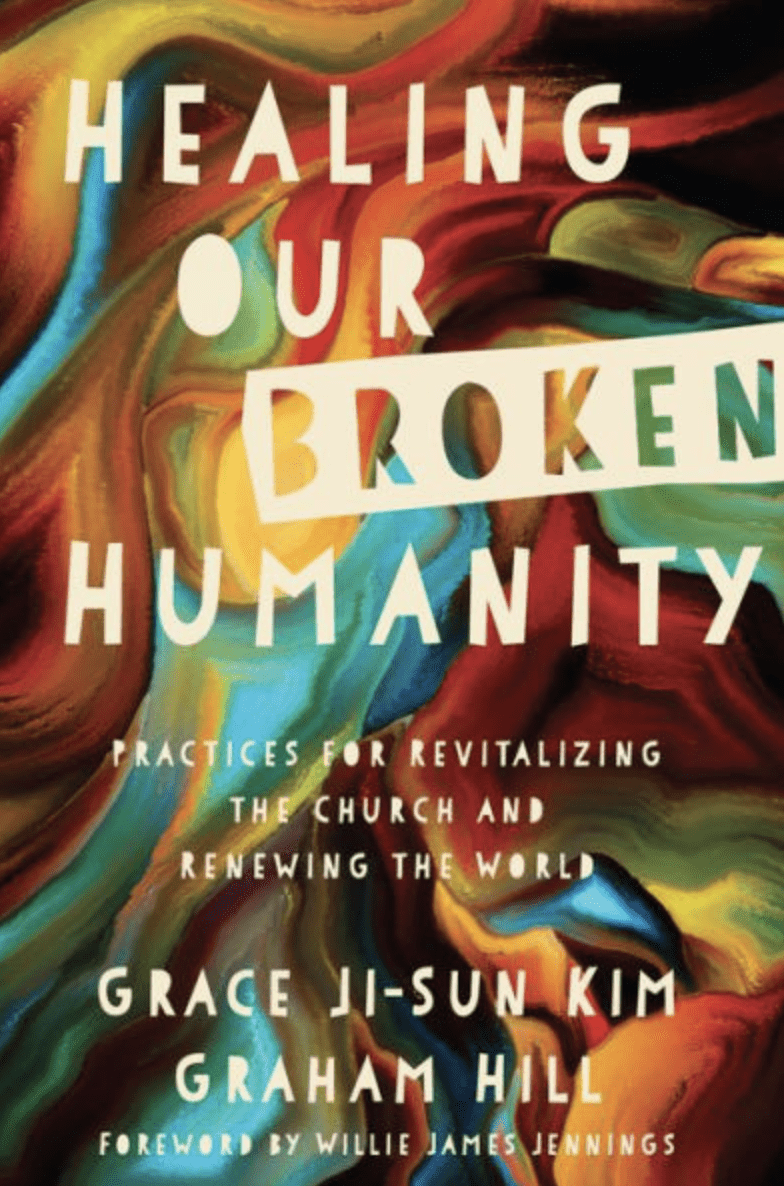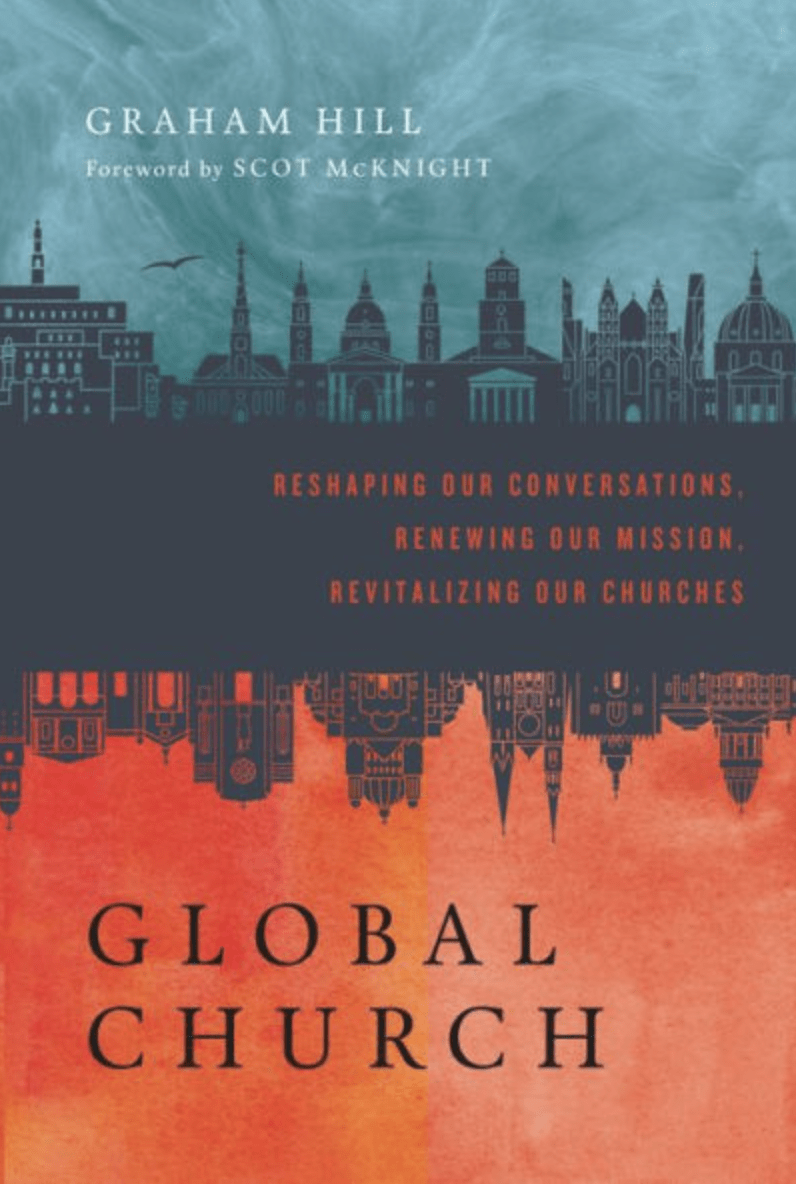
Feminine words and imagery for God enrich Christian faith and mission. Rather than being a stumbling block to biblical Christian faith and witness, these feminine images are faithful to the biblical revelation and enhance our mission in the world.
Like many world religions, Christianity has historically been dominated by patriarchal language and imagery. However, using feminine language and imagery for God and the Spirit can significantly enhance Christian mission in various cultures and societies today. As we will explore, this inclusive language holds the potential to provide a more comprehensive understanding of God, affirm the dignity of women, challenge patriarchal structures, foster dialogue and inclusivity, and enhance holistic missions.
Should We Use Feminine Images for God?
Perspectives on using feminine words and images for God vary greatly among religious traditions, denominations, and individual believers. Here are some reasons why using feminine imagery along with male imagery makes sense:
1. God Transcends Gender: God, as an infinite being, cannot be fully contained or described by human language or categories, including gender. Although traditional language for God has been predominantly male, it doesn’t mean God is male in a literal or biological sense. Thus, including feminine language can help underscore the belief that God transcends gender.
2. Imago Dei: The Genesis account of creation describes humans as being made in the “image of God” (Imago Dei). If both men and women are made in God’s image, as Genesis 1:27 states, it can be inferred that God contains masculine and feminine qualities.
3. Biblical Metaphors: The Bible contains several instances where feminine imagery describes God. For example, in Isaiah 66:13, God comforts as a mother comforts her child. Similarly, in Matthew 23:37, Jesus describes himself as a mother hen gathering her chicks. These passages demonstrate that feminine metaphors for God are present in Scripture.
4. Wisdom as Sophia: In the Old Testament Wisdom Literature, wisdom is personified and is often portrayed using feminine language. In the Greek Septuagint, the word for wisdom is “Sophia,” and this is a feminine noun. However, in this context, “Sophia” is not used as a personal name but as the Greek term for wisdom. The personification of wisdom as a woman, particularly in the Book of Proverbs, is more of a literary device used to express and understand aspects of God’s character rather than presenting wisdom as a separate entity or individual named Sophia. The feminine aspect of the Hebrew word for wisdom (Chokmah) and its Greek equivalent (Sophia) could be a significant reason for this personification. So, wisdom (Chokmah or Sophia) is personified in feminine terms.
5. Inclusivity and Justice: From a social and ethical perspective, using both male and female language for God can be seen as a way to promote gender equality and inclusivity within religious communities. If only male images of God are used, this could potentially contribute to the marginalisation of women and upholding patriarchal structures in religious contexts.
6. The Fullness of Human Experience: Using masculine and feminine language for God can help express the fullness of human experience and how people encounter God. If our language for God is limited to one gender, it might determine how people can relate to God.
7. Historical Precedence: Many ancient religions included both male and female representations of the divine. In some interpretations, the early Hebrew religion also included feminine divine figures. Advocates for female language for God might argue for reclaiming these historical precedents.
There’s excellent value, therefore, in opening up the discussion about the nature of God and our language about God.
The Bible and Feminine Imagery for God
The Bible primarily refers to God using masculine imagery, which reflects the patriarchal context in which the texts were written. However, there are indeed instances where feminine imagery is used to describe God’s attributes or actions. The use of feminine language for God is not meant to suggest that God is female, but that God transcends gender and encompasses both masculine and feminine qualities. Here are some passages in the Bible where feminine imagery is used:
- Deuteronomy 32:18: Moses speaks to the people about forgetting God, who gave them birth.
- Numbers 11:12: Moses speaks to God, comparing God to a mother who gives birth and cares for her infant.
- Isaiah 42:14: God is portrayed as a woman in labour.
- Isaiah 49:15: God is compared to a nursing mother.
- Isaiah 66:13: God as a comforting mother.
- Hosea 11:3-4: God described as a mother teaching her toddler to walk.
- Hosea 13:8: God’s fury is compared to a bear robbed of her cubs.
- Matthew 23:37 and Luke 13:34: Jesus likens himself to a hen gathering her brood under her wings.
- Luke 15:8-10: Jesus tells a parable about a woman searching for a lost coin, suggesting God’s joy in finding the lost.
- Genesis 1:27: While this does not specifically use feminine imagery for God, it states that both male and female were created in the image of God, suggesting God encompasses both genders.
Again, these images don’t intend to feminise God but rather to provide a fuller, richer portrait of the divine nature that exceeds human gender distinctions.
Church Fathers and Feminine Imagery for God
While the predominant language used for God in Christian history is masculine, some Church Fathers and early Christian writers did use feminine imagery or analogies to describe specific attributes or actions of God. Here are a few examples:
1. Origen of Alexandria (184–253): One of the most influential theologians in the early Christian church, Origen occasionally used feminine imagery for God. He compared God’s activity in the world to a mother’s love for her children.
2. Clement of Alexandria (150–215): Clement occasionally employed feminine metaphors for God. In one passage, he refers to the Word (Logos) as the Mother, and God the Father, suggesting a balance of feminine and masculine principles in the divine.
3. Augustine of Hippo (354–430): Augustine didn’t explicitly use feminine imagery for God but emphasised that God is beyond human gender distinctions. He also often spoke of God as love, which is not specifically feminine but can be seen as involving both masculine and feminine qualities.
4. John Chrysostom (347–407): Known for his eloquent homilies, Chrysostom once used the metaphor of a mother bird to describe Christ’s longing to gather Jerusalem to him.
It’s essential to note that these Church Fathers, like later Christian writers, did not see these feminine metaphors as indicating that God is female. Instead, they were using human language and imagery to try to express the inexpressible reality of God, who, as a spiritual being, transcends human gender.
Theologians and Feminine Imagery for God
Many ancient and modern theologians have used feminine imagery to describe God or specific divine attributes or have affirmed the legitimacy and importance of doing so. Here are a few:
1. Julian of Norwich (1342–1416): A 14th-century mystic, Julian is known for her book “Revelations of Divine Love”, which refers to Jesus as a mother figure. She wrote, “As truly as God is our Father, so truly is God our Mother.”
2. Meister Eckhart (1260–1328): This German theologian and mystic often used feminine metaphors when referring to God. In one of his sermons, he said, “What does God do all day long? God gives birth. From the beginning of eternity, God lies on a maternity bed giving birth to all.”
3. Hildegard of Bingen (1098–1179): A Benedictine abbess, writer, and theologian, Hildegard frequently used feminine symbolism in her writings. She spoke of the “feminine” Wisdom of God and referred to the Holy Spirit using the feminine form in Latin.
4. John of the Cross (1542–1591): A Spanish mystic, John often used feminine metaphors to describe the soul’s relationship with God in his poetry.
5. Karl Rahner (1904–1984): This influential 20th-century Catholic theologian said God could appropriately be addressed as Father and Mother.
6. Jürgen Moltmann (born 1926): In his book “The Trinity and the Kingdom”, Moltmann argues that God contains both masculine and feminine elements and supports using feminine metaphors for God.
7. Sallie McFague (1933–2019): A feminist Christian theologian, McFague is known for her models of God, including God as mother, lover, and friend.
8. Martin Luther (1483-1546): Although primarily using masculine language for God, Luther sometimes used feminine metaphors to illustrate certain aspects of God’s love and care. In his lectures on Isaiah, for instance, Luther likens God’s love and care for humanity to that of a mother for her child.
While these theologians have drawn on feminine imagery, it is essential to note that they do not argue that God is female. They argue instead that God transcends human gender and that masculine and feminine images are needed to express our understanding of the divine fully.
Ruach and Feminine Language for the Spirit
“Ruach,” the Hebrew word for “spirit,” is grammatically feminine. In many Old Testament instances where the Spirit of God is discussed, such as in Genesis 1:2, the Hebrew uses “ruach.” Some theologians argue that this feminine grammatical construction, although not necessarily denoting gender, provides a basis for using feminine imagery or language in talking about the Holy Spirit.
However, it is essential to note that grammatical gender in languages like Hebrew and Aramaic does not necessarily correlate with gender identity or biological sex as we understand it in English. Instead, it is a linguistic feature that can affect the form of a noun and its associated adjectives or verbs but does not necessarily imply anything about the nature of the noun itself.
In the early Syriac Christian tradition, the Holy Spirit was often understood as feminine, partially because the word for “spirit” in Aramaic (the language closely related to Hebrew that was used by many early Christians, including, most likely, Jesus himself) is also grammatically feminine. This, combined with the biblical imagery associated with the Spirit (such as birthing and nurturing), led some to use feminine language when referring to the Holy Spirit.
A notable figure in the Syriac tradition who referred to the Holy Spirit in feminine terms was the 4th-century theologian Aphrahat. Some of his writings survive and show an understanding of the Holy Spirit that uses feminine language and imagery.
While the grammatically feminine nature of “ruach” in Hebrew and its counterpart in Aramaic has contributed to some traditions using feminine language for the Holy Spirit, it is essential to remember that this is a complex and somewhat debated topic within the study of theology and biblical languages. Not all theologians or biblical scholars agree on the implications of the feminine grammar of “ruach,” most Christian traditions maintain that God, including the Holy Spirit, transcends gender.
Benefits of Using Feminine Imagery for God
Using feminine imagery and words for God can benefit contemporary Western cultures. Here are a few potential benefits:
1. Expanded Understanding of God: Using feminine imagery can help break down our limited human conceptions of God. It can remind us that our human categories and stereotypes, including gender, do not confine God. It can help us appreciate God’s nature’s complexity, depth, and richness.
2. Balance in Spiritual Expression: The dominant use of masculine imagery and language for God can suggest that God is male, which can, in turn, imply that men are somehow closer to the divine or more like God than women are. Using feminine language and imagery can help to counter this imbalance and affirm the full equality of men and women as bearers of the divine image.
3. Affirmation of Women: Using feminine language and imagery for God can validate and affirm the experiences and contributions of women. It can challenge patriarchal structures in society and religious communities, promoting greater equality and justice.
4. Healing and Inclusivity: For individuals who have had harmful experiences with male authority figures, masculine images of God can hinder their relationship with God. Feminine images can provide alternative ways of relating to God that may facilitate healing and spiritual growth. They can make the divine more accessible and relatable to different people, promoting a more inclusive faith community.
5. Richness of Worship and Prayer: Using various images of God, including feminine images, can enrich worship and prayer by allowing us to express and explore different aspects of our relationship with the divine.
Using feminine or masculine metaphors aims to reflect different aspects of God’s nature rather than assign a gender to God. Using these feminine images enriches Christian faith and engagement with the world.
Mission and Feminine Imagery for God
Feminine imagery and words for God can also significantly enrich Christian mission in a variety of ways:
1. Holistic Understanding of God: Just as the Christian mission involves reaching the whole person—body, mind, and spirit—it also benefits from a holistic understanding of God. Utilising masculine and feminine imagery can help convey a complete image of God, affirming that God is not confined to human gender categories and can relate to all people in all their diversity.
In a world that acknowledges the significance of both genders, embracing feminine language and imagery for God and the Spirit presents a more holistic portrayal of the divine. God, as understood in Christian theology, transcends human gender categories. Yet, our language and images of God are often limited to masculine metaphors. Incorporating feminine language, such as calling God a nurturing mother or referring to the Holy Spirit with the feminine “ruach,” can broaden our understanding of God. This multiplicity mirrors the complexity, depth, and richness of God’s nature, thereby enhancing the effectiveness of Christian mission in conveying a comprehensive divine image.
2. Cultural Relevance: In many contemporary Western cultures, there is a growing emphasis on gender equality and inclusivity. Using masculine and feminine imagery for God can help make Christianity more culturally relevant and appealing by demonstrating its compatibility with these values.
As societies increasingly affirm gender equality and inclusivity, the Church’s readiness to incorporate feminine language and imagery for God can demonstrate its relevance to contemporary cultural sensibilities. By doing so, the Church can position itself as a space that respects and values gender inclusivity, thereby becoming more appealing to younger generations and those prioritising gender equality.
3. Addressing Social Issues: Using feminine imagery for God can help the church address social issues like gender inequality and domestic violence. It can challenge patriarchal attitudes and structures, affirm the dignity and worth of women, and promote justice and peace in relationships and society.
Utilizing feminine imagery for God can be a powerful tool in addressing social issues, particularly gender inequality, patriarchal structures, and violence against women. Here are a few ways this can be beneficial:
- Challenging Patriarchy: A dominant use of masculine language and imagery for God can inadvertently reinforce patriarchal structures by implying that the divine is exclusively male. This could perpetuate the idea that men are superior or closer to the divine. By incorporating feminine imagery for God, we challenge patriarchal norms and affirm that the divine transcends gender.
- Affirming Gender Equality: Feminine imagery for God sends a strong message about the inherent value and dignity of women, underscoring the belief that all people are equally created in the image of God (Genesis 1:27). This can be a powerful statement in societies where gender inequality is prevalent, promoting equal rights and opportunities for all genders.
- Combating Violence against Women: By emphasizing the feminine aspects of God, the Church can contribute to changing societal norms that often justify or tolerate violence against women. A more balanced view of God can help dismantle harmful stereotypes and attitudes perpetuating such violence.
- Encouraging Inclusive Leadership: Feminine imagery of God can inspire a more inclusive leadership model within faith communities and beyond. By depicting God as nurturing, compassionate, and relational – qualities often associated with femininity – it encourages the inclusion of these attributes in leadership roles, often dominated by stereotypically masculine traits.
- Promoting Respect and Dignity: Using feminine imagery for God can help foster a culture of respect and dignity for all people, regardless of gender. This can significantly address various social issues, from gender discrimination and harassment to denying women’s rights.
- Creating Space for Dialogue: Using feminine language and imagery for God can also create space for more extensive dialogues on gender, sexuality, and social justice within faith communities. It encourages a more profound exploration of these critical issues in the light of faith, facilitating growth and transformation within these communities.
4. Affirming Dignity and Worth: Christian mission involves affirming the dignity and worth of all people as bearers of God’s image. Using feminine and masculine language for God can support this aspect of the Christian mission by affirming that women and men fully reflect the divine image.
By using feminine imagery for God, Christianity can affirm the dignity and worth of women, thereby challenging traditional patriarchal structures. It’s crucial to stress that women and men alike are created in God’s image (Genesis 1:27). However, consistently referring to God in masculine terms could inadvertently imply a spiritual hierarchy favouring men. Thus, incorporating feminine language for God can symbolically reinforce the equality of all genders in the eyes of the divine. This can be particularly influential in societies where gender inequality persists, empowering women and challenging patriarchal norms.
5. Fostering Dialogue: Utilising feminine imagery can open up new avenues of dialogue with people within and outside the Christian tradition. It can provide opportunities for constructive engagement with other faith traditions and contemporary movements, such as womanism and feminism.
Using feminine language and imagery for God can also foster dialogue and inclusivity. It can stimulate conversations about God’s nature, women’s role in the Church, and Christianity’s relationship with contemporary social issues. Furthermore, using feminine language can enhance interfaith dialogue, as several religions incorporate feminine divine imagery. Simultaneously, feminine imagery can be therapeutic for individuals with harmful experiences with male authority figures, offering alternative ways of envisioning and relating to God.
6. Evoking a Caring and Nurturing God: Feminine images of God can highlight God’s caring, compassionate, and nurturing attributes. This can be a powerful tool in Christian missions, emphasising God’s tender love and care for all people, especially the marginalised and oppressed.
Using feminine language and imagery for God and the Spirit can significantly enhance Christian mission in today’s diverse societies. It facilitates a more holistic understanding of the Creator God, affirms the dignity of women, challenges patriarchal structures, fosters dialogue and inclusivity, and enhances holistic mission. Moreover, it aligns Christianity with contemporary movements for gender equality, strengthening its appeal in the modern world. It’s essential to remember that these are not attempts to assign a gender to God but rather efforts to fully utilize the breadth of biblical metaphors and transcend limited human perceptions of the divine. As we navigate the complexities of the 21st century, the adoption of feminine language and imagery can empower the Christian mission to reflect a divine reality and a glorious God who transcends human constructs and embraces all humanity.
Using both feminine and masculine imagery and language for God can significantly enrich Christian faith and mission, helping them be more meaningful, relevant, biblical, and holistic.
Photo Credit: A vision of Wisdom, “Her Eye On the World” by Shiloh Sophia





